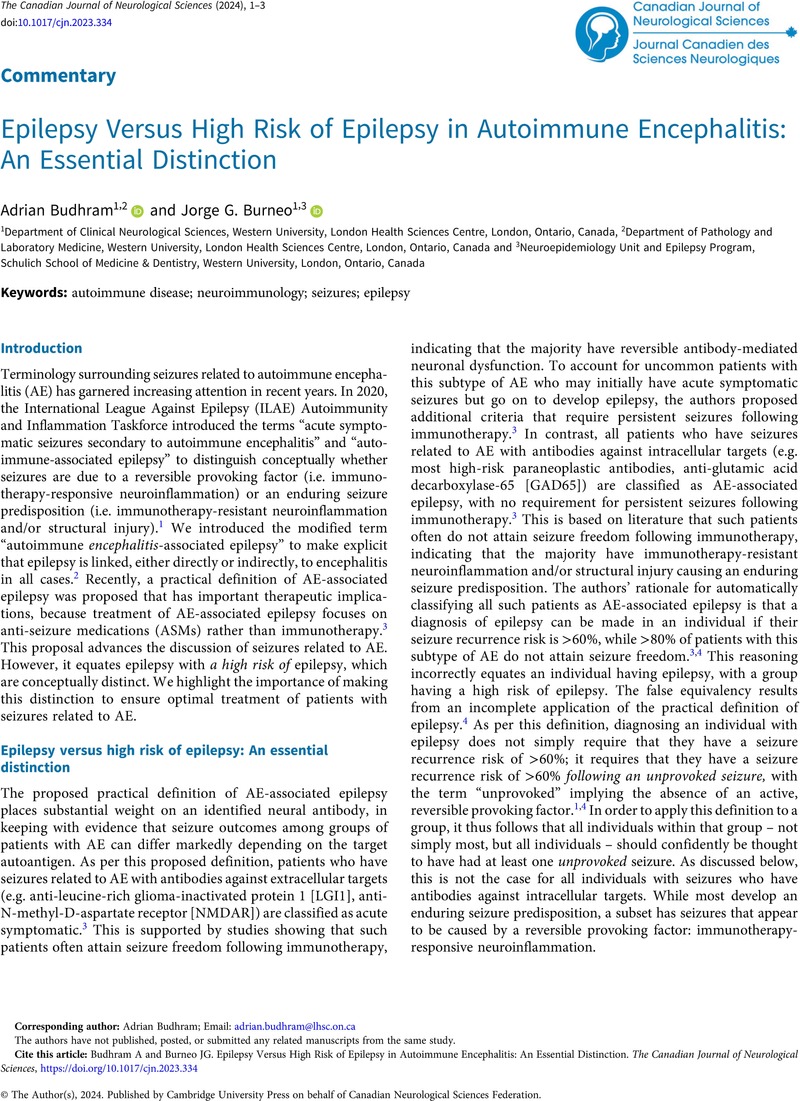No CrossRef data available.
Article contents
Epilepsy Versus High Risk of Epilepsy in Autoimmune Encephalitis: An Essential Distinction
Published online by Cambridge University Press: 05 January 2024
Abstract
An abstract is not available for this content so a preview has been provided. Please use the Get access link above for information on how to access this content.

- Type
- Commentary
- Information
- Copyright
- © The Author(s), 2024. Published by Cambridge University Press on behalf of Canadian Neurological Sciences Federation
Footnotes
The authors have not published, posted, or submitted any related manuscripts from the same study.
References
Steriade, C, Britton, J, Dale, RC, et al. Acute symptomatic seizures secondary to autoimmune encephalitis and autoimmune-associated epilepsy: conceptual definitions. Epilepsia. 2020;61:1341–51.CrossRefGoogle ScholarPubMed
Budhram, A, Burneo, JG. Acute symptomatic seizures, epilepsy, and autoimmune encephalitis: clarifying terminology in neural antibody-associated disease. Epilepsia. 2023;64:306–10.CrossRefGoogle ScholarPubMed
Rada, A, Bien, CG. What is autoimmune encephalitis-associated epilepsy? Proposal of a practical definition. Epilepsia. 2023;64:2249–2255.CrossRefGoogle ScholarPubMed
Fisher, RS, Acevedo, C, Arzimanoglou, A, et al. ILAE official report: a practical clinical definition of epilepsy. Epilepsia. 2014;55:475–82.CrossRefGoogle ScholarPubMed
Smith, KM, Britton, JW, Thakolwiboon, S, et al. Seizure characteristics and outcomes in patients with neurological conditions related to high-risk paraneoplastic antibodies. Epilepsia. 2023;64:2385–2398.CrossRefGoogle ScholarPubMed


